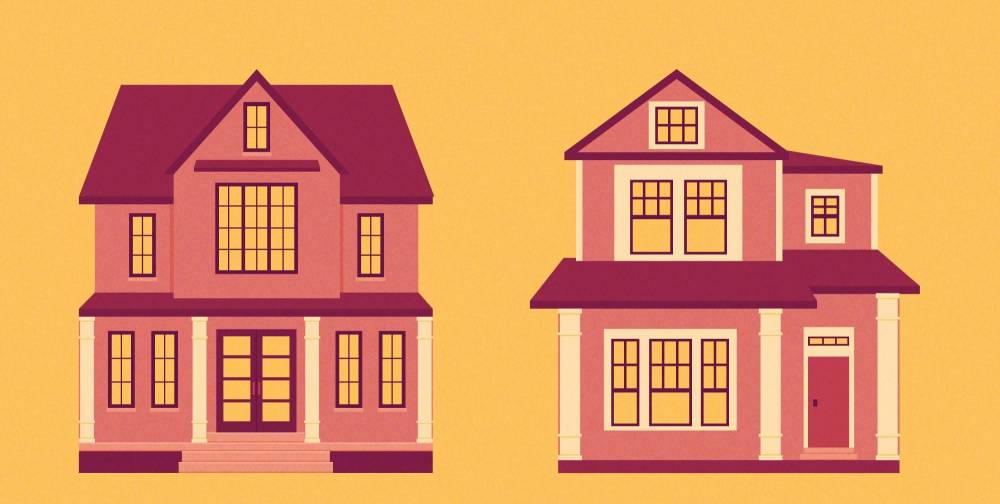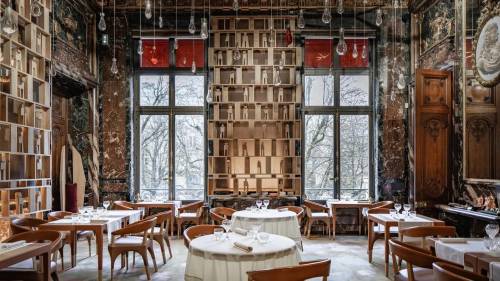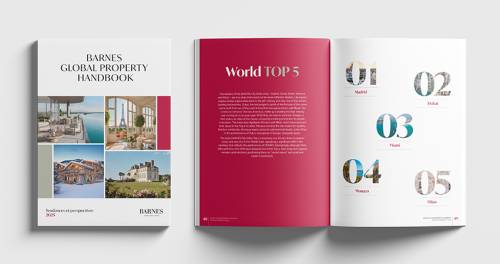

60 Years of Barbie Architecture: When Popular Culture Meets Design
In her 1959 debut by Mattel, Barbie became a doll that transformed the toy industry and has been a popular culture icon ever since. 3 years later, the first accompanying Barbie Dollhouse was created, a home for Barbie representing her domestic, habitual, and day-to-day life. Over the past 60 years, Barbie Dreamhouses have changed and evolved, each iteration adopting the architectural and design fads of the eras in which they were produced. In fact, each dollhouse is an artifact of the unique blend of history, politics, popular culture, trends, and design styles that define architecture as we know it.
The Ranch Home
Mid-century Modernism and Ranch Style Homes characterized the early 1960s in the Global North. Architecture Icons such as Frank Lloyd Wright and Ludwig Mies van der Rohe were influential figures of the time, pioneering these design aesthetics. Midcentury Modernism, popular during the post-World War 2 period, is defined by its focus on simplicity, functionality, and integration of indoor and outdoor spaces. Moreover, midcentury modernism’s goal was to bring Americans to the suburbs, Americans like Barbie. On the other hand, Ranch ranch-style architecture was defined by featuring single-story dwellings with open layouts and casual living styles.
The 1962 Barbie Doll House was the first to ever be created, blending both these styles seamlessly. In a time when it was rare for an American woman to own her own home and were denied mortgage applications, the Dreamhouse was designed according to the respective architectural trends. The house was a single-story, yellow-walled, cardboard ranch home. Moreover, it featured clean lines and almost no ornamentation. The house’s signature flat roofline is reminiscent of the architectural style at the time, resembling some of the infamous Case Study Homes.
Interestingly, Barbie’s first home does not feature a kitchen and celebrates Barbie’s education and autonomy. This was not typical of early dollhouses, which were intended to teach young girls domestic tasks from an early age. The dollhouse was a clear example of the intersection between popular culture and the respective social narrative of the times.
The A-Frame
At the end of the 1970s, most Americans had fully subscribed to the perfect cookie-cutter suburban life, and Barbie was no exception. The “A-Frame” house became prevalent, with its roof extending to the foundation, sloping inward, and creating the iconic triangular shape. In fact, the A-frames became popular for their ski vacation resemblance, offering a unique aesthetic appeal whilst still being practical. Barbie’s 1979 “Progressive Cabin” was a true reflection of that style at the time. The plastic dollhouse was constructed in three sections that can be pulled apart, it featured big skylights, balconies, and windows.
The home was still very much influenced by the mid-century modern style that came before it. For example, the home features slouchy seating resembling Michel Ducaroy’s Togo Sofa for Ligne Roset. Additionally, the sleek mirrored coffee tables and a duplicate of the Eames chair for Herman Miller. The entire home is a testament to “modularity” and prefabricated interchangeable components. Finally, the house features the popular earth colors that were trendy at the time. Interestingly, the entire A-Frame dollhouse will be reproduced in staple Barbie Pink two years later.
The Victorian McMansion
The 1990s saw the rise of suburban McMansions, the desirable living accommodation for a significant number of Americans in the 80s and the 90s. This Victorian dream house that Barbie lived in featured ornate details, turrets, and decorative trims. Moreover, it had Doric columns reminiscent of neoclassical styles and glitter on the exterior, representing the priority of “showiness” in that time period. The home itself is a colonial two-story, all in Barbie’s staple pink. In fact, at the end of the 1970s, Barbie and that specific shade of pink became interchangeable.
The façade of the dreamhouse mixes many architectural styles into one, symbolic of the 90s and the McMansion era in architectural style. Some windows are Venetian, large tripartite windows that were a key element in Palladian architecture. Whereas other windows right next to them were bay windows, representative of the Tudor architecture, a form of Medieval architecture in England and Wales.
Overall, this blend of different architectural and design styles was a staple of the 90s. This home also has the return of the more traditional dollhouse, with historical inflections and stained glass famous from the Art Noveau movement. Lastly, the house features an explosion of floral patterns all over the walls and home furniture décor.
The Influencer Condo
As hyper-globalization is becoming more widespread, social media has heavily influenced the current architectural style. The influence of social media has created trends of “Instagram-worthy” designs that appeal to a wide audience and attract followers for world-known influencers. For contemporary influencers, the space they occupy has to resonate with their personal brands and align with their day-to-day activities. Moreover, the trends blur the lines between our physical and virtual presence.
This is the defining feature of Barbie’s 2021 Dreamhouse: TikTok and Instagram for the ultimate social media influencers. In 2021, we see a return to the modern flat roofline, nodding to the neo-modernism return. The house is clearly set in California, with Barbie appearing to be a DJ, with a party room, a karaoke machine, and a disco ball. The sporty shade of pink in this dream house celebrated being a single girl and creating your own wealth through social media. With ample space to host her friends, Barbie’s dream house is the ultimate condo for a group of influencers to hang around by the pool.
Moreover, the awareness of sustainability and inclusive, accessible design for all bodies is another defining feature of the California condominium. Along with a wheelchair-accessible elevator integrated into the Dreamhouse, Barbie also has her own work-from-home station, acknowledging the flexibility of post-covid lifestyles that have shown up in domestic design.In conclusion, Barbie’s historical dream houses and architectural designs are more than just playsets, serving as artifacts of their time, telling stories about their time's evolving cultural and political narratives. As our societies continue to grow and adapt to current times, architecture in popular culture is an essential tool of cultural reflection. Buildings can be saturated with symbols and identities, whether it’s the mid-century modern dream house of the 1960s or the Victorian McMansion dream house of the 1990s. Moreover, a simple doll house can offer insight into our shared history and the evolving dynamics between societies and the spaces we inhabit.
Written by Nour Fakharany
Archdaily.com: 60 Years of Barbie Architecture: When Popular Culture Meets Design



